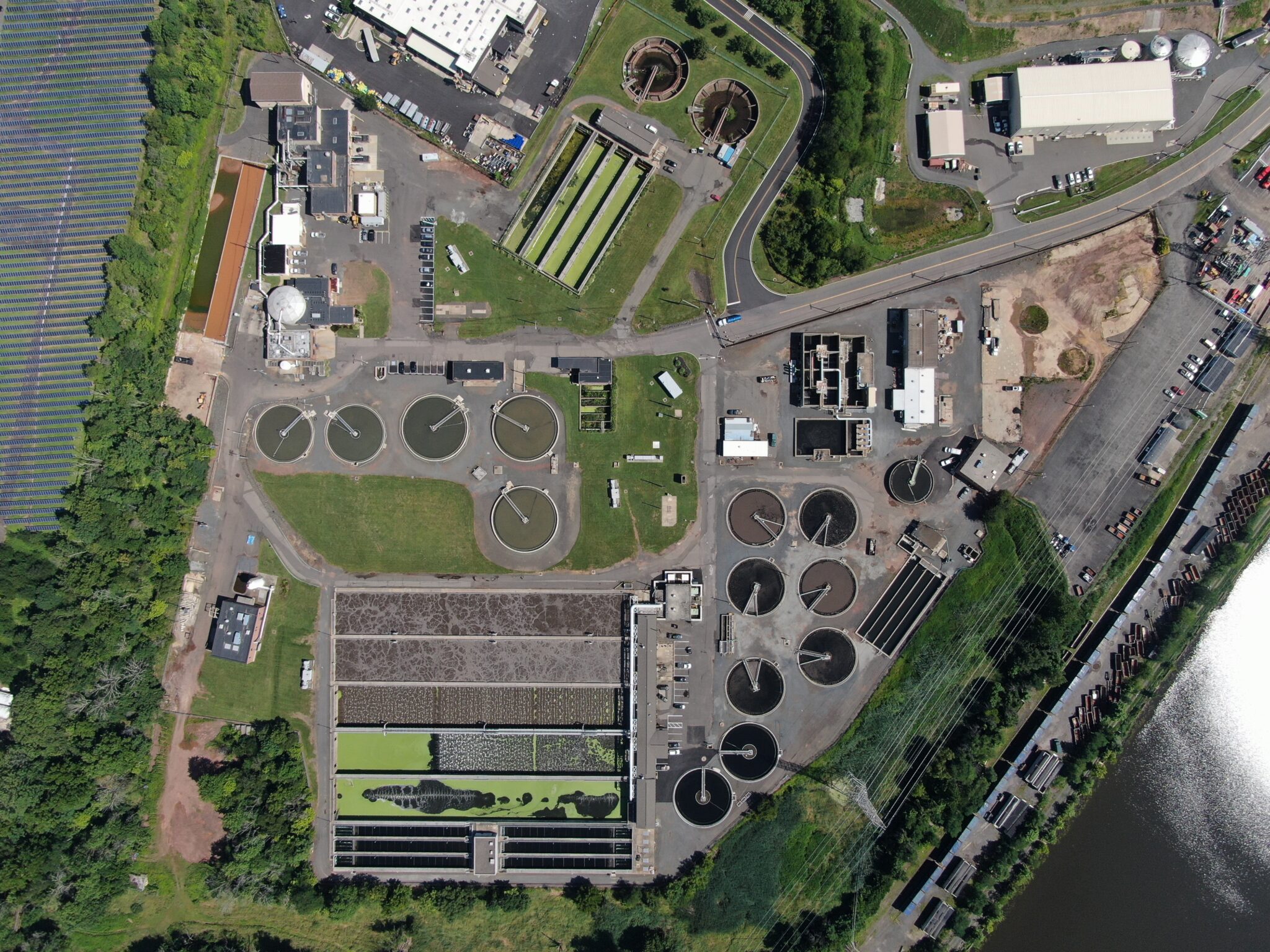
At this final stage of the process, effluent from the multimedia filters enters two (2)
chlorine contact tanks where liquid Sodium Hypochlorite is introduced for final disinfection.
Furthermore, Sodium Bisulfate is introduced to remove any residual chlorine in the effluent.
The Authority constantly monitors the plant to ensure the discharged effluent meets NJDEP standards.
(Pictures coming soon)
After passing through the aeration basins, the wastewater proceeds to the final clarifiers.
Similar to the primary clarifiers, the flow velocity is reduced in these tanks,
allowing the suspended particles in the wastewater to settle out of the effluent.
(Pictures coming soon)
In the aeration basins, the wastewater flows into aerated basins
containing natural organisms, collectively referred to as
'biomass'—a complex mixture of bacteria, fungi, protozoans, and other microorganisms.
These organisms use the dissolved solids in the wastewater as food,
thus utilizing biological treatment to effectively treat the wastewater.
(Pictures coming soon)
The influent pumping station (IPS) receives the wastewater from the Authority’s gravity interceptor system.
There are two (2) bar screens to remove rags, glass, rocks, and other large debris from the wastewater.
Then, three (3) influent pumps pressurize the flow to “push it” to the Headworks Building.
(Pictures coming soon)
The Multimedia Filters (MMF) were constructed as part of
the American Cyanamid Company WTP in the mid to late 1970s.
The purpose of this facility is to provide a tertiary level of treatment
by removing additional suspended solids from the secondary clarifier effluent.
(Pictures coming soon)
The Authority has five (5) primary clarifiers, which facilitate the physical separation of solids from the wastewater.
The wastewater flows into the primary settling tanks where the flow velocity is reduced, and the suspended material is allowed
to settle to the bottom of the tanks.
Approximately 50% of the suspended solids and Biological Oxygen Demand (BOD) are removed in this unit process.
(Pictures coming soon)
The headworks building contains two (2) mechanical bar screens and two (2) grit
collectors. Grit consists of sandy materials and other inorganics that readily
settle out from the wastewater stream. The grit collectors feature a chain and multiple buckets within a
long, narrow, horizontal settling chamber, where the
grit is accumulated and later disposed of offsite.
From sludge from primary clarifiers and the activated sludge thickener are stored in the blend
storage tank before being pumped to the Belt Filter Presses (BFP). At the BFP,
the sludge undergoes mechanical pressing allowing the water to be
“squeezed out” of the sludge. The dewatered
sludge is referred to as sludge cake.
The Authority’s 16-foot fluidized bed incinerator burns the sludge cake from
the belt filter presses. The incinerator byproducts are
heavily treated by the SRVSA and regulated by the NJDEP.
Mercury Emissions Control Building
The Mercury Emission Control System utilizes
a series of HEPA filters and an activated carbon
adsorber to scrub the incinerator flue gas of particulates
and reduce Mercury emissions by approximately 96%.